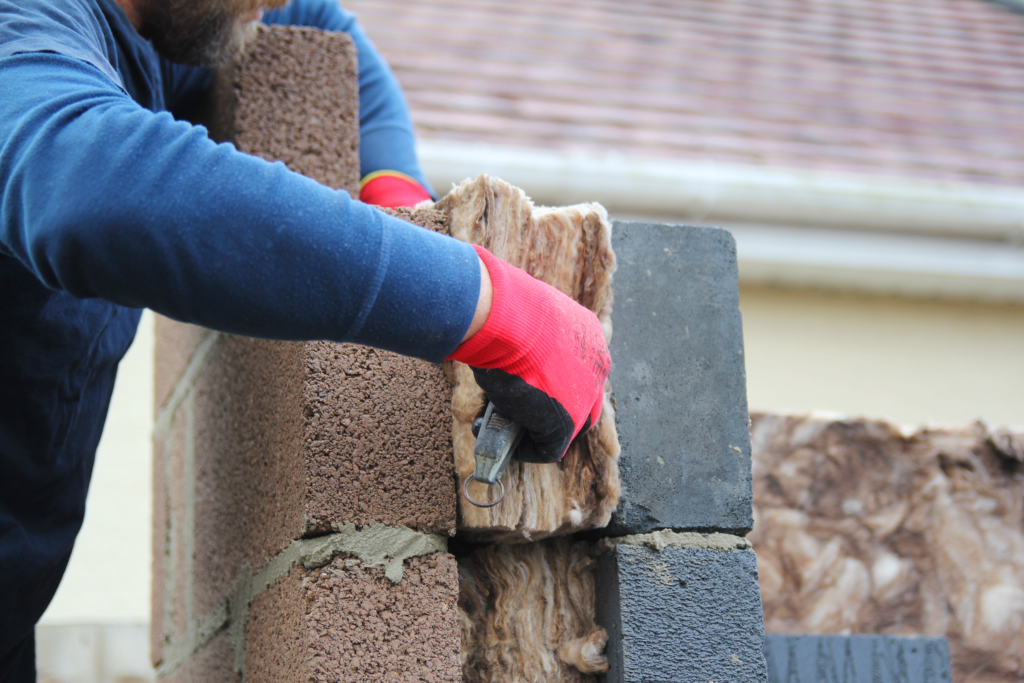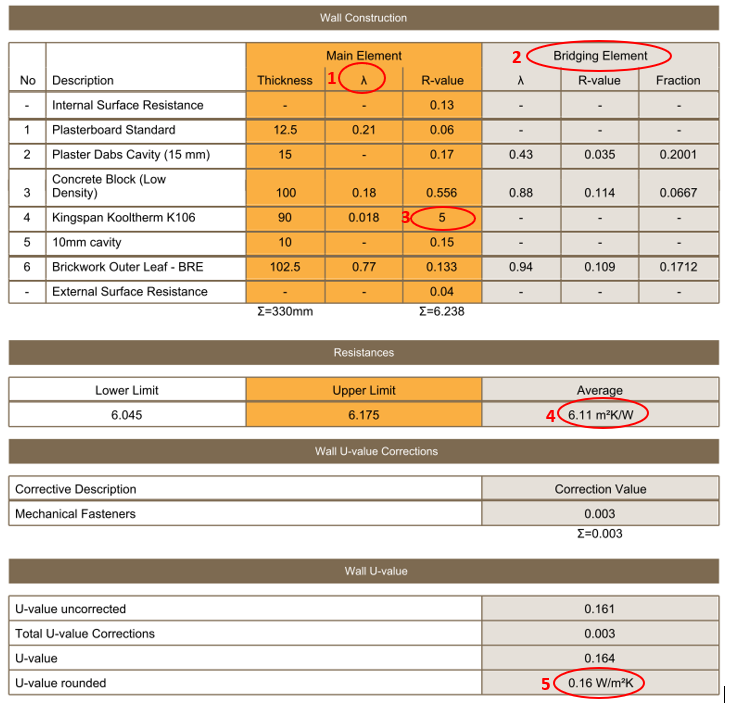U-values play a huge part in determining the energy performance of a building.
So what are U-value calculations, and how do they relate to SAP Assessments?
A U-value is a measure of the rate of heat transfer through a structure, with a lower U-value meaning a better insulator. In terms of SAP assessments, U-values relate to all exposed:
- Floors
- Walls
- Roofs
- Doors
- Windows
- Roof-lights
U-value information for openings (doors, windows and rooflights) will need to come from the supplier or manufacturer. In terms of glazed openings, the required U-value is that of the whole opening including the frame, and not just the glass itself.

For floors, walls and roofs, a U-value calculation is required to demonstrate how the value is achieved. These must be provided as evidence before an EPC can be lodged for a dwelling.
The technical bit…
The U-value of an element depends on all materials contained within it. For example, with a cavity wall, this would include the plaster, plasterboard, blockwork, insulation, cavity and brickwork.
Each of these materials will have a thickness and conductivity value, which combine to make a thermal resistance value. All of these materials’ resistance values are added up to give the total thermal resistance for that element. Dividing 1 by this total resistance gives us the U-value. Therefore, a larger total resistance will give a smaller U-value, meaning less heat loss.
A bit more about conductivity…
The thermal resistance of a material can be improved by making it thicker or by using a lower thermal conductivity. Therefore, when specifying insulation, a lower thermal conductivity will lead to a lower U-value for a given thickness of insulation. Most insulation boards achieve a conductivity of 0.020 – 0.022 W/mK but Kingspan’s Kooltherm K100 range has a conductivity of 0.018 W/mK, allowing lower U-values to be achieved for a given thickness
Sometimes a developer will want to change the specified installation during the design. If the insulation being used has the same conductivity and thickness, it will achieve the same U-value and therefore not affect the SAP calculation. If either of these two things get worse it’s best to check with the assessor to see if it affects things.
What does a U-value calculation look like?
Here’s an example of what a U-value calculation looks like. The example is a cavity masonry wall using full fill Celotex K106 insulation, achieving a U-value of 0.16.

1. λ is the symbol for conductivity
2. Bridging elements are other materials that bridge the main element, such as mortar in the blockwork and brickwork
3. You can see that the insulation material make up the vast majority of the thermal resistance
4. This is the total thermal resistance of all the elements
5. This is the calculated U-value
How do I get a U-value calculation?
Some design teams will calculate U-values themselves. Alternatively, you can request U-value calculations from the insulation manufacturer via their online calculator if they have one, or contact them directly.
Check out the online calculators on the Celotex and Kingspan websites.
Your SAP Assessor should also be able to carry out U-value calculations for the scheme if required. You will need to provide details of the materials used including thicknesses, make and model of insulation, and whether any insulation layers are bridged by other materials such as timber studs or joists.
Some further information
These are the U-values used in the notional SAP assessment which determines the target CO2 emissions that you need to meet for compliance. You should always aim to meet or improve these values or they will need to be compensated elsewhere.
- Floors – 0.13 W/m2K
- Walls – 0.18 W/m2K
- Roofs – 0.13 W/m2K
- Opaque doors – 1.0 W/m2K
- Half glazed doors – 1.2 W/m2K
- Windows/glazed doors/roof lights – 1.4 W/m2K
Need Help With Your Project?
Just give us a call on 0330 055 34 05 , or email us at be@buildenergy.co.uk
